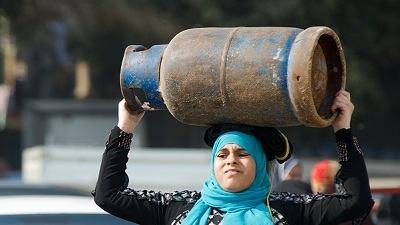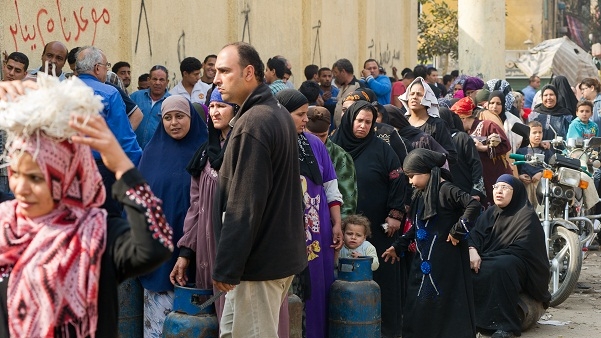Ahmed is an elderly man with weather-beaten skin who spends long hours on an old bicycle selling gas cylinders from door-to-door in Cairo, alerting customers to his wares by tapping the cylinders with a piece of metal. With the official price of a gas cylinder is 8 Egyptian pounds, Ahmed makes his living by selling it for 20 pounds in return for carrying it into a customer’s house. It is profitable but back-breaking work. “Often I carry it on my back up to high floors,” Ahmed said.
Cylinders filled with Liquefied Petroleum Gas (LPG) are the main source of fuel for more than 75 percent of Egyptian households, with many going to a lot of trouble to buy them for cooking and heating water. Despite their cheap, subsidized price, however, they represent a costly item on household budgets.
From a consumer’s point of view, they are often inconvenient. Abeer, a mother of three, has recently moved into an apartment where a natural gas connection is available, ending her use of cylinder gas. “Sometimes, it emptied while I was cooking, or when one of us was taking a shower.”



